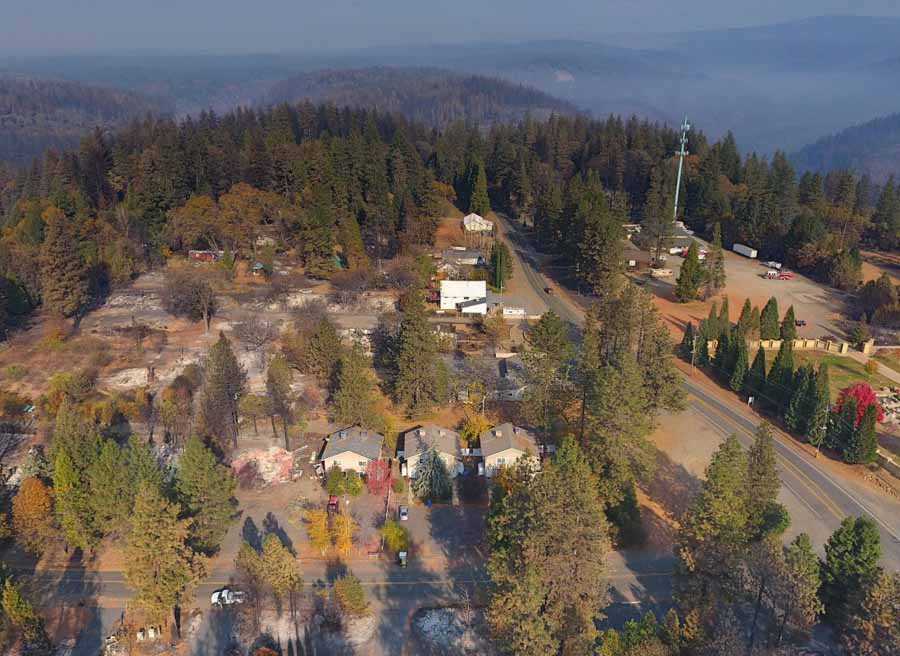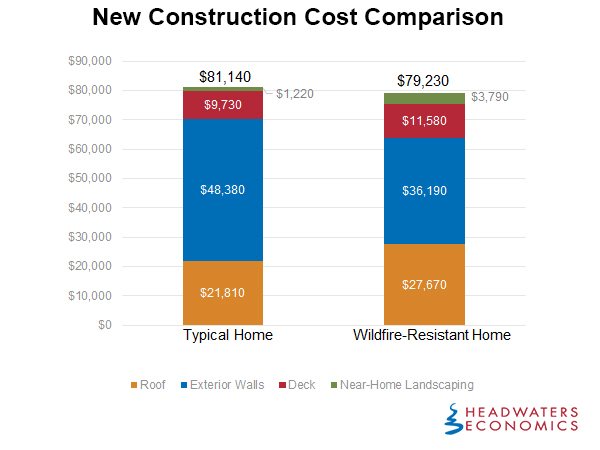
With tens of thousands of homes being destroyed in the last year in California wildfires it should be a very high priority for home builders and local governments to swiftly adopt the practices that can greatly reduce the vulnerability of structures. It is not a given that if a large rapidly-spreading wildfire approaches a house it will ignite and burn to the ground.
Media reports sometimes marvel at how an occasional structure will be spared, and may describe it as miraculous or random. Instead, it is based on science. Some structures are designed, built, and maintained to be less vulnerable than others. The other half of the equation is what is within the home ignition zone — what will become fuel within 100 feet. If there is continuous vegetation or other flammable material in that zone that can carry the fire, especially close to the structure, it stands less chance of survival.
But for now let’s think about the structure itself. There are several useful reference guides for architects, home builders, and zoning boards containing information that can lead to designs and building codes that can help keep a fire from turning into a disaster.
• International Code Council’s International Wildland Urban Interface Code (IWUIC),
• National Fire Protection Association’s Standard for Reducing Structure Ignition Hazards from Wildland Fire (Standard 1144), and
• California Building Code Chapter 7A—Materials and Construction Methods for Exterior Wildfire Exposure.
Headwaters Economics compared the costs of new construction of a typical home vs. one with wildfire resistant standards for a three-bedroom, 2,500-square-foot, single-story, single-family home representative of wildland-urban interface building styles in southwest Montana. Below are excerpts from the article:
We examined costs in four vulnerable components of the home: the roof (including gutters, vents, and eaves), exterior walls (including windows and doors), decks, and near-home landscaping. Overall, the wildfire-resistant construction cost 2% less than the typical construction, with the greatest cost savings resulting from using wildfire-resistant fiber cement siding on exterior walls, in lieu of typical cedar plank siding. While cedar plank siding is typical in the wildland-urban interface of western Montana, fiber cement siding is already a common choice in many regions because of its relative affordability, durability and low maintenance needs. Wildfire-resistant changes to the roof resulted in the largest cost increase, with a 27% increase in gutters, vents, and soffits. The following sections describe the wildfire-resistant mitigations for each component.


I notice in many of the post-fire images from many location show trees new houses, scorched, but not burned down next to the gray ash shadow of a house. Indeed a friend’s house and yard, surrounded by eucalyptus on all four sides was untouched in the Berkeley hills fire, yet these trees were within 100 feet of her house.
Having survived a smart meter fire [gas and electric meters blew] I can endorse the concrete board siding idea although the fake distressed wood texture distresses me a lot. Water barrels saved one side of the garage completely inspiring me to think more along the issues of hydration and rehydration. How does this sit with you?
I am encouraging insurance companies to absorb the cost of grey-water ready piping in rebuilds as keeping the foliage near a house green and hydrated may retard fire climbing up dried up grasses and vines. I installed gray water along the front of my house and the moisture from the washing machine prevented the usual summer dry-off. Water barrel overflows will extend beyond my garden to boundaries especially along the side where neighbor Barbeques a lot.
The lawn was replaced by a bee garden with many ice plants the bees love. It demands less water to keep it growing through the season. I remember when my family moved to California, the front yard was completely in ice plant as was much of the roadsides… Maybe there was a reason.
KO
One reason gray water hasn’t been “exploited” is that most sewage processing requires gray water to ensure enough water volume to adequately process the black water / sewage. Home outside use of gray water won’t be noticed as a problem until enough gray water doesn’t find its way into the community sanitary systems.
Even single home septic systems require some gray water in order to function properly. More so if low volume toilets are used.
Bill; what happened to the 130,ooo decimating acres [and later less-] of the Queensland wildfires, when no quick relief was in the forecast! -Please Bring us up to date!